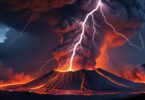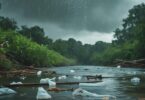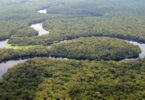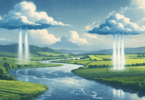Air pollution is often seen as an urban problem, but its impacts stretch far beyond city limits. It infiltrates the delicate balance of our ecosystems, endangering the lives of countless wildlife species. Imagine a world where vibrant bird songs fade, and the rustle of leaves is silent. This is the grim reality that air pollution threatens, casting a shadow over our natural habitats.
Understanding Air Pollution
Air pollution refers to the presence of harmful substances in the atmosphere, primarily caused by human activities such as industrial emissions, vehicle exhaust, and agricultural practices. These pollutants not only compromise air quality but also seep into the environment, affecting the very wildlife we cherish.
Devastating Effects on Wildlife
- Health Impact
Wildlife suffers tremendously from air pollution. Animals exposed to polluted air can experience respiratory problems, reduced immunity, and even premature death. For instance, studies have shown that birds in polluted areas often exhibit signs of chronic lung disease, drastically shortening their lifespans. - Behavioral Changes
Pollution doesn’t just affect physical health; it alters animal behavior too. Many species have adapted to escape polluted environments, leading to altered migration patterns and disrupted breeding cycles. For example, fish exposed to high levels of air pollution may change their spawning habits, affecting population numbers. - Habitat Degradation
Airborne pollutants can damage natural habitats, impacting food sources and breeding grounds. For instance, pollutants can settle on soil and water bodies, leading to acid rain that affects plant growth. This degradation is particularly devastating for species that rely on specific habitats for survival. - Case Studies
Consider the plight of the American Bald Eagle. Once on the brink of extinction due to habitat destruction and pollution, these majestic birds have made a comeback. However, they still face threats from air quality issues affecting their hunting grounds, highlighting the ongoing battle against pollution.
Long-Term Consequences
The consequences of air pollution extend beyond individual species; they ripple through entire ecosystems. When wildlife populations decline, the balance of ecosystems is disrupted, leading to a loss of biodiversity. This decline can also impact human health, as the loss of healthy ecosystems affects air quality, water sources, and food security.
Prevention and Solutions
- Policy Changes
To combat air pollution, we need stronger policies and regulations. Governments must implement stricter emissions standards and invest in renewable energy sources to reduce reliance on fossil fuels. - Community Actions
Local communities can play a vital role in fighting pollution. Organizing tree-planting initiatives and clean-up drives can help improve air quality. Even small actions, like using public transportation or reducing waste, can have a significant impact. - Education and Awareness
Raising awareness about the effects of air pollution on wildlife is crucial. Educational programs can empower individuals to make informed choices that benefit both the environment and public health.
The urgent need to address air pollution for the sake of wildlife and future generations cannot be overstated. Our ecosystems are resilient, but they need our help to thrive.








